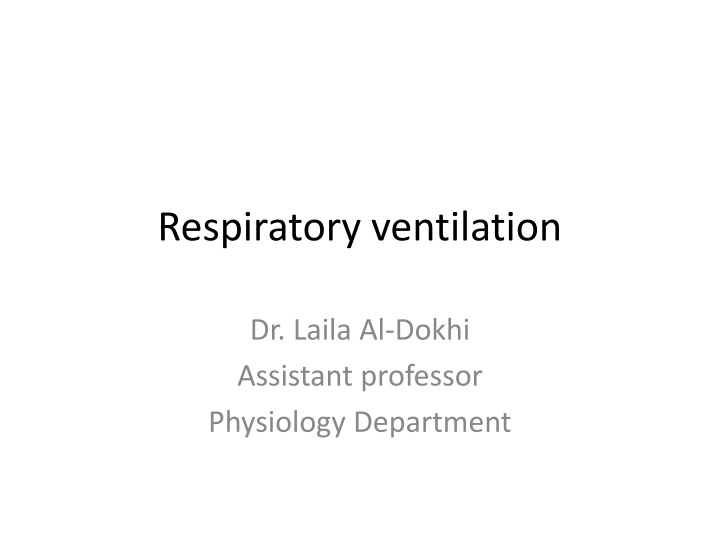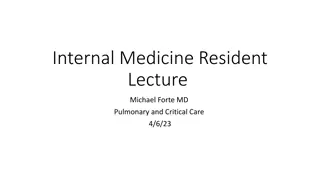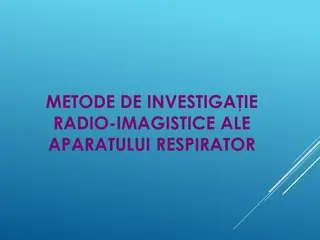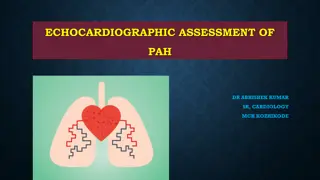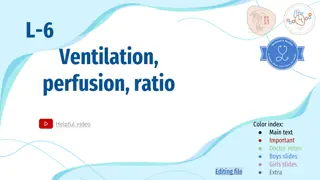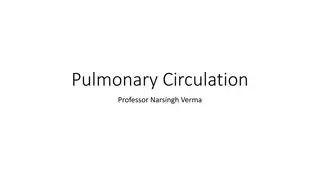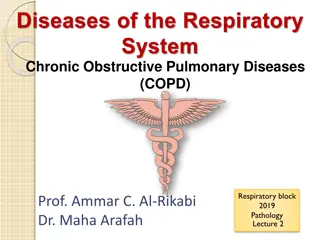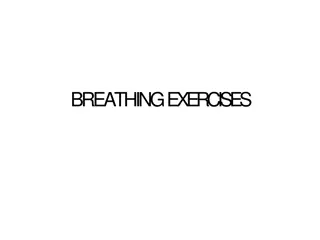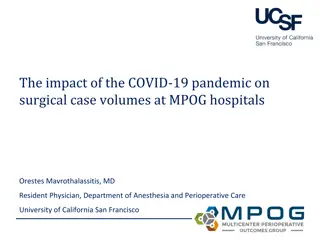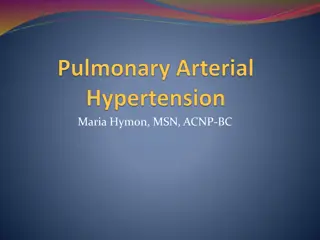Pulmonary Volumes and Capacities
This educational content explores pulmonary volumes, capacities, and respiratory ventilation, covering topics such as lung volumes, ventilation rates, FEV1, dead space, and more. Detailed information on various lung volumes and capacities is provided, along with learning objectives and measurement methods. The content also discusses the differences between minute ventilation and alveolar ventilation. Various images are included to visually enhance the learning experience.
Download Presentation

Please find below an Image/Link to download the presentation.
The content on the website is provided AS IS for your information and personal use only. It may not be sold, licensed, or shared on other websites without obtaining consent from the author.If you encounter any issues during the download, it is possible that the publisher has removed the file from their server.
You are allowed to download the files provided on this website for personal or commercial use, subject to the condition that they are used lawfully. All files are the property of their respective owners.
The content on the website is provided AS IS for your information and personal use only. It may not be sold, licensed, or shared on other websites without obtaining consent from the author.
E N D
Presentation Transcript
Respiratory ventilation Dr. Laila Al-Dokhi Assistant professor Physiology Department
Learning objectives By the end of the lecture you should be able to: - 1-Define the various lung volumes and capacities and provide typical values for each. 2-Define ventilation rates, their typical values, and their measurement. 3- Describe FEV1and its role in differentiating obstructive and restrictive lung diseases. 4- Describe the types of dead space. State a volume for the anatomical dead space. 5- Define the term minute ventilation and state a typical value. 6- Distinguish minute ventilation from alveolar ventilation.
Pulmonary volumes and capacities Pulmonary volumes (by using spirometer): 1) Tidal volume is the volume of air inspired or expired with each normal breath = 500ml in young adult man. 2) Inspiratory reserve volume is the extra volume of air that can be inspired over and beyond the normal tidal volume = 3000ml. 3) Expiratory reserve volume is the extra amount of air that can be expired by forceful expiration after the end of a normal tidal expiration ~ 1100ml. 4) Residual volume is the volume of air that still remain in the lungs after the most forceful expiration ~ 1200ml.
The pulmonary capacities Comprises more than one volume: 1) Inspiratory capacity is the volume of air inspired by a maximal inspiratory effort after normal expiration = 3500ml = inspiratory reserve volume + tidal volume. 2) The functional residual capacity is the volume of air remaining in the lungs after normal expiration = 2300ml = expiratory reserve volume + residual volume. 3) The vital capacity is the volume of air expired by a maximal expiratory effort after maximal inspiration ~ 4600ml = inspiratory reserve volume + tidal volume + expiratory reserve volume. 4) Total lung capacity is the maximum volume of air that can be accommodated in the lungs ~ 5800ml = vital capacity + residual volume. 5) Minute respiratory volume is the volume of air breathed in or out of the lungs each minute = respiratory rate x tidal volume = 12 X 500ml = 6000ml/min. All lung volume and capacity are about 20 to 25% less in women than in men and are greater in athletic persons than in small and asthenic persons.
Closed circuit Helium Dilution Method C1xV1 = C2xV2 C1: concentration of Hi in spirometry V1: volume of air in the spirometry. C2: Final concentration of helium V2 :Volume of spirometry+ FRC FRC = ( Ci He (C1) - 1) Vi Spi (V1) Cf He (C2)
Forced Vital Capacity (FVC) and FEV1 (Timed vital capacity) The person is asked to inspire as deeply as possible and then to breath out as hard and as fast as he can. The expiration is continued until he expired all the air out and thus forced vital capacity is obtained. During this process the volume of air expired in the first second is collected and is known as FEV1.
FEV1/FVC ratio Normally it is about 80%. This ratio differentiate between obstructive and restrictive lung diseases Is normal in restrictive lung diseases (e.g interstitial pulmonary fibrosis) It decreases in obstructive (bronchial asthma, emphysema)
FORCED EXPIRATION TIDAL BREATHING NORMAL FEV1 = 3.0L FVC = 4.2L FEV1/FVC = 72% FEV1 OBSTRUCTIVE FEV1 FEV1 = 0.9L FVC = 2.3L FEV1/FVC = 40% RESTRICTIVE FEV1 FEV1 =1.8L FVC = 2.3L FEV1/FVC = 78% 1 SECOND
Minute respiratory volume MRV = Respiratory rate x Tidal volume = RR X TV = 12 X 500 = 6L/min. it could rise to 200 L/min or more than 30 times normal if RR = 40 TV = 4600 ml in young adults man
Anatomical dead space:- Occupies the air-conducting system down to the terminal bronchioles No gas exchange Volume 150ml Physiological dead space = anatomical dead space + alveolar dead space Respiratory zone:- Occupies the space distal to the terminal bronchioles start from the respiratory bronchioles down to the alveolar sacs Gas exchange takes place Volume 350ml/min
The rate of alveolar ventilation Alveolar ventilation per minute is the total volume of new air entering the alveoli and other adjacent gas exchange areas each minute. Va = Respiratory rate X (Vt Vd) = Respiratory rate X (Vtidal volume Vdead space) = 12 X (500 150) = 4200ml
